Natural nest sites on which many of our bird species depend are fast disappearing as gardens and woods are tidied and our houses are better maintained. But you can help – providing a nestbox or planting natural cover in your garden gives birds a safe environment to rear their young.
Alongside feeding them, putting up a nestbox is a great way to help garden birds – and is also great fun for you! Observing the to-ing and fro-ing of adult birds, followed by the first appearance of chicks and then watching them grow and finally fledge, provides a special insight into the natural world.
You could also put out a nesting bundle, and watch as birds take the materials to use in their nests. However, make sure that you don't include human hair (too thin, poses a risk of entanglement) or pet hair (may have residues of flea treatment) in the bundle.
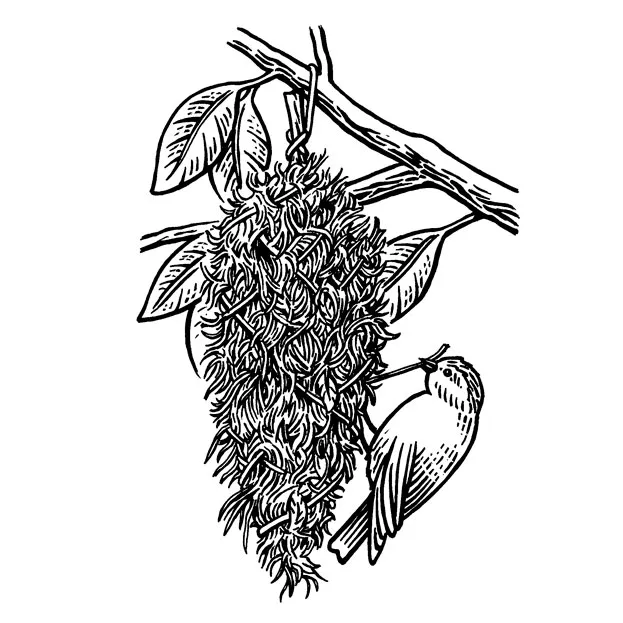
How to provide natural bird nest sites in your garden
Many garden birds will nest inside hollow trunks or cavities in rotten branches, but others prefer to make their own nest among dense foliage. Plants such as holly, whitebeam, hawthorn, blackthorn, firethorn and cotoneaster offer great natural cover – avoid trimming branches until pairs have finished nesting. Climbers such as Virginia creeper, honeysuckle, ivy and clematis also provide ideal nest sites.
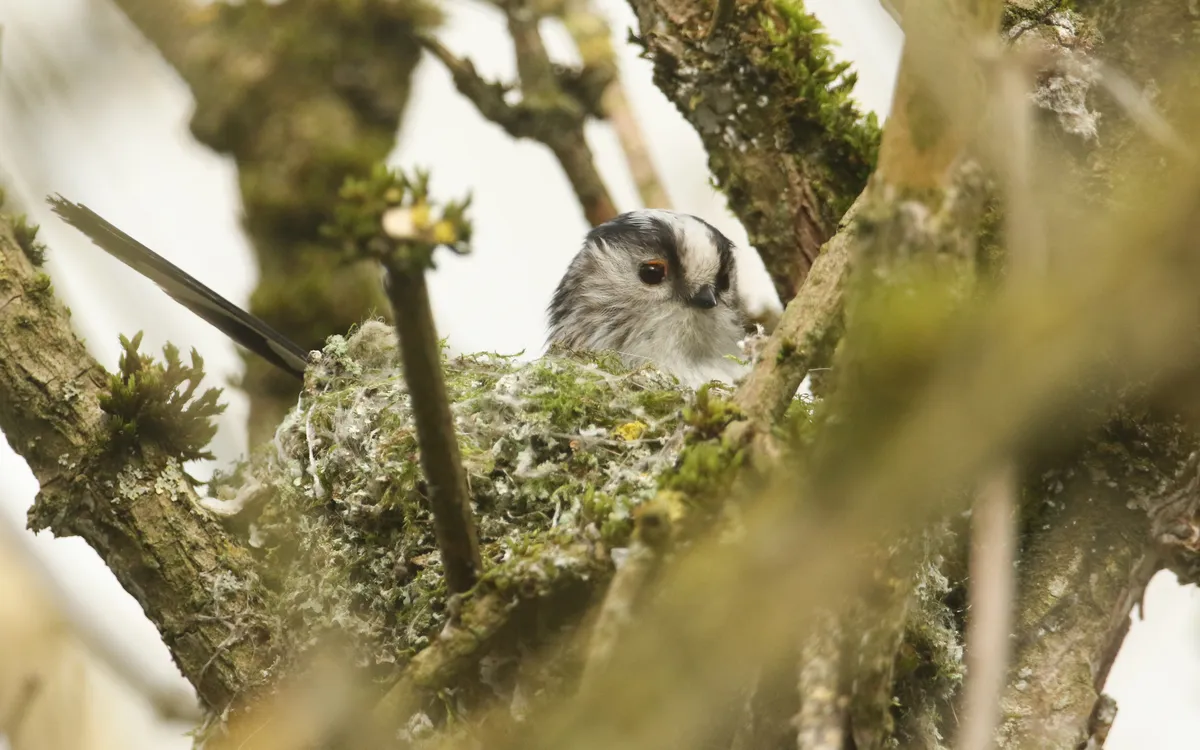
If you find a natural nest, make sure to follow the laws on not disturbing it. If you're able to see it without disturbing it, or can find it again once the breeding season is over, use our illustrated guide to help identify what has made it.
Discover more ways you can help nesting birds in your garden.
More bird identification guides:
What to look for when buying a nestbox
A nestbox should be constructed from an insulating material, such as durable cedar, oak or beechwood – don’t choose one that is made from plastic, ceramic or corrosive materials.
The wood of the nestbox should ideally be 19mm thick (no less than 15mm) and the internal floor area should be at least 130cm² to give parent birds enough room to incubate their eggs and brood the young. Remember too that the diameter of the nestbox hole should be suitable for the type of species you hope to attract (see information below).
A good nestbox should be accessible and not too high so you can clean it out easily. Wooden boxes can be treated on the outside with a preservative provided that it is non-toxic and water-based.
Choosing the right design for your bird nestbox
Nestbox-using species have different requirements for size, height, and proximity to other nestboxes.
Small nestboxes with holes
To attract blue and great tits, the BTO advises placing your nestbox between 1m and 5m above the ground. However, coal tits prefer a box no more than 1m high. A house sparrow will look for a box at least 2m high, whereas a nuthatch prefers a box at least 3m high. Make sure that foliage is not obscuring the entrance hole so that birds have a clear view outside and can avoid predators.
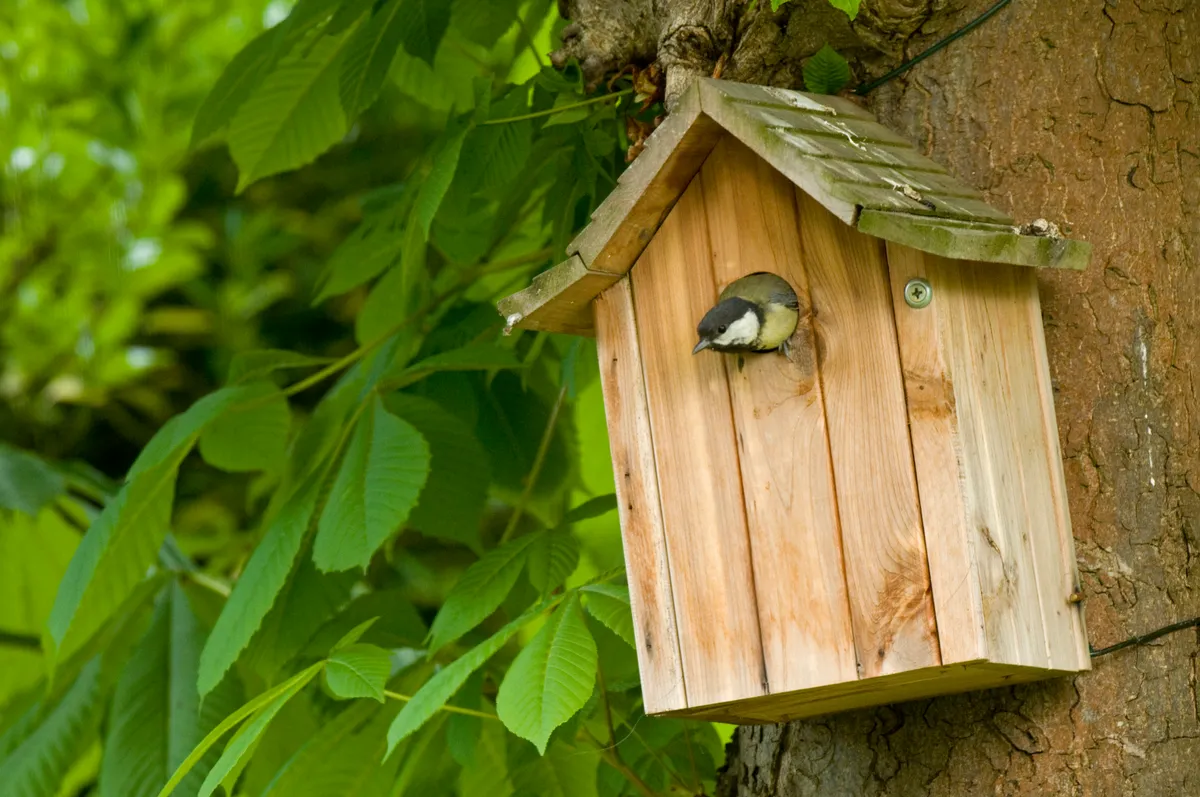
25mm hole: coal tit, blue tit, marsh tit
28mm hole: great tit
32mm hole: house sparrow, nuthatch
Small open-fronted nestboxes
Birds that use small open-fronted boxes are prone to predation when they’re sitting on eggs. So put the box high enough to deter cats, and ensure that thick vegetation is growing across the front of the box for additional protection. The standard design uses the 100mm front panel.
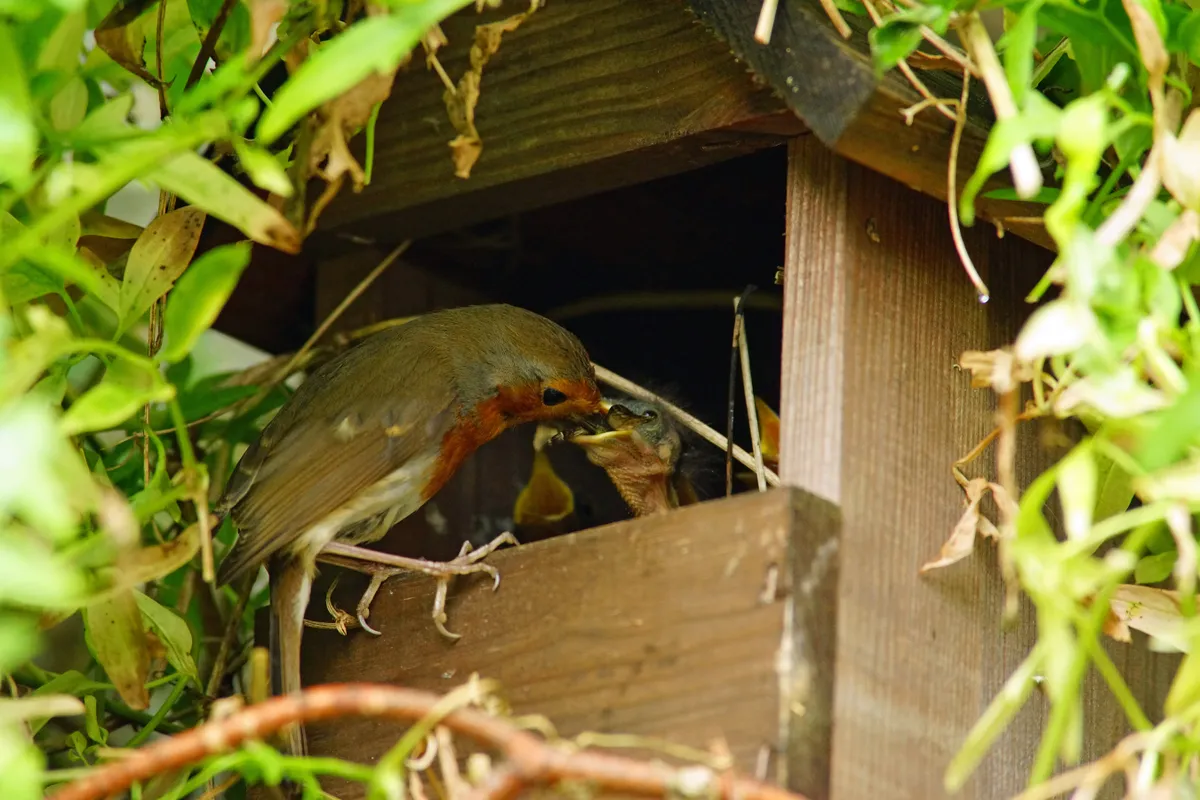
60mm high at front: spotted flycatcher
100mm high at front: robin, pied wagtail
140mm at front: wren
Medium nestboxes with holes
These boxes are designed to attract starlings and great spotted woodpeckers, which favour sites over 2.5m high and over 3m high respectively. In areas where there are fewer alternative nest sites, such as dead trees and pan-tile or corrugated roofs, these boxes can be more successful at attracting starlings.
Oval-shaped hole: swift
45mm hole: starling
50mm hole: great spotted woodpecker
Large nestboxes
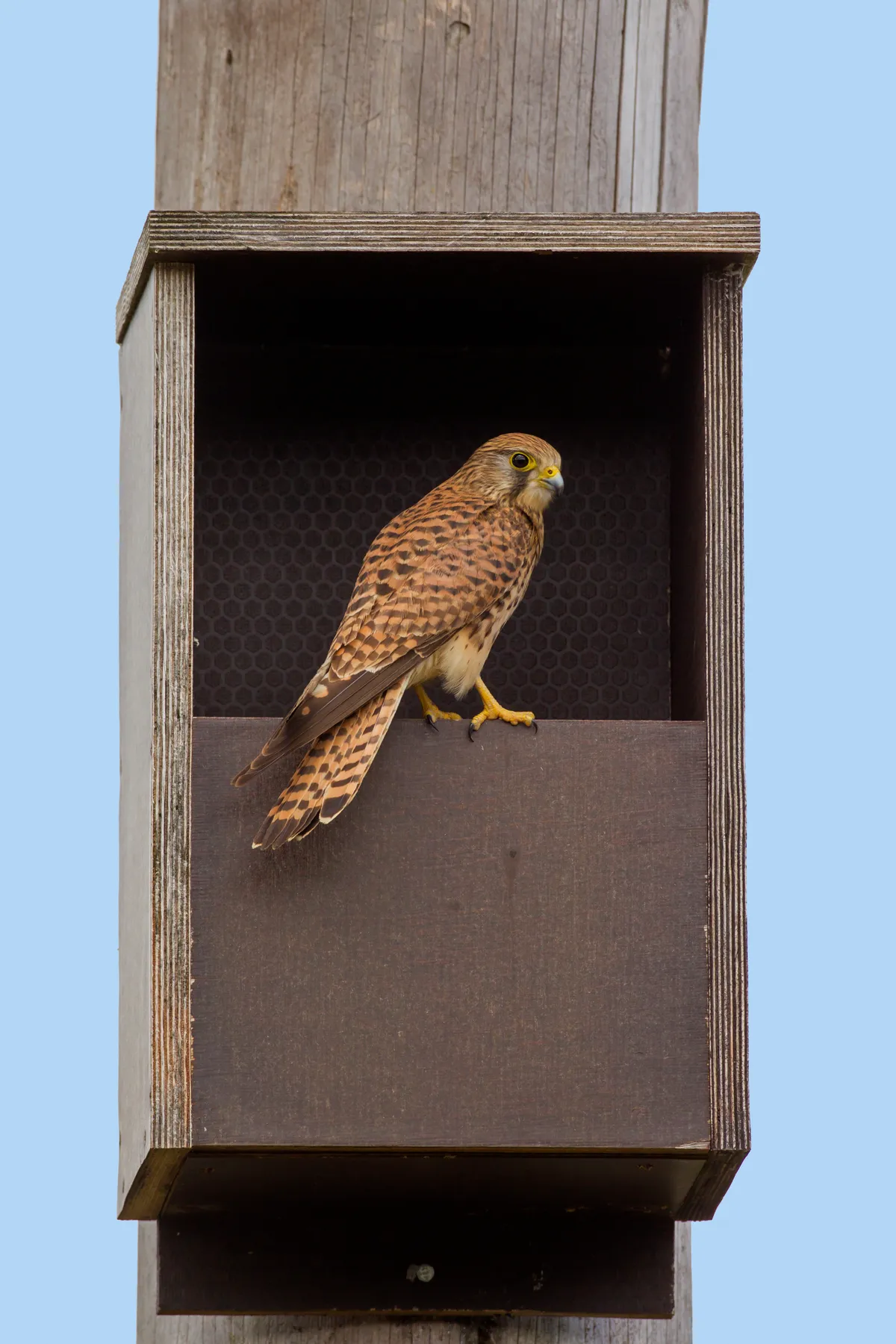
These boxes are suitable for birds of prey, such as owls and kestrels. There are different designs available, depending on the species, and where the box is going to be located (e.g. in trees, or in barns).
Do any birds nest in colonies?
House sparrow, house martins, swifts and starlings prefer to nest in loose colonies high up in the eaves. Space out two or three nestboxes on the same side of your house.
How to make a garden bird nestbox
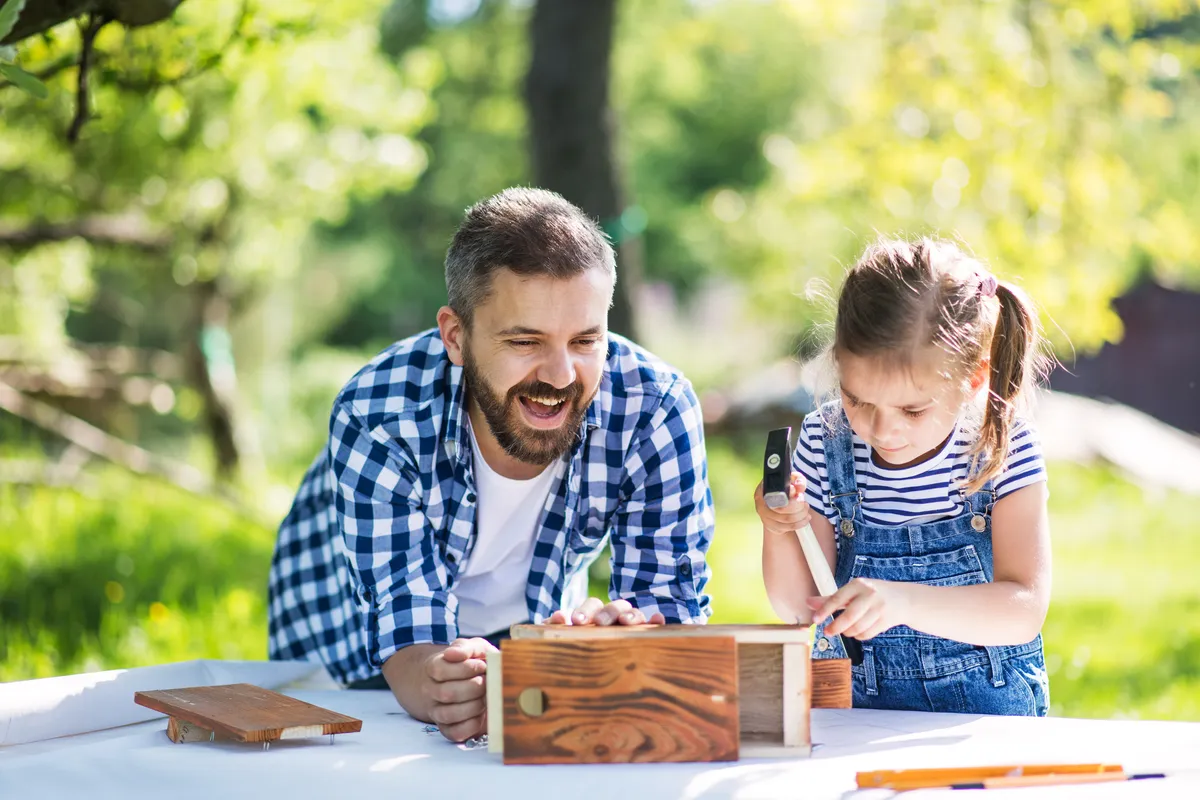
With a little preparation, it’s inexpensive and straightforward to make a home for nesting and roosting birds in your garden. Ornithologist, presenter and author Dan Rouse explains how to make a small nestbox with a hole, and how to adapt it to an open-fronted nestbox, in this step-by-step guide.
When to put up a nestbox
Many visiting garden birds will enter boxes during the autumn and winter looking for a safe place to roost during the cold nights, and this gives them an early indication of nestbox availability.
The birds may begin to seriously investigate nest sites for breeding in February and March, but this depends on the weather and also varies between species.
As the National Nestbox Week website says, “the best advice is to put up your box as soon as it’s ready ... there's no time like the present!”
How and where to put up a bird nestbox
Follow our advice to ensure you choose the safest nesting site for your garden birds.
1
Choose the site of your nestbox carefully
Don’t site nestboxes too close together because this may cause aggressive behaviour between birds. Avoid erecting one near a birdfeeder – the activities of visiting species could disturb nesting pairs – or buying a nestbox incorporated in a bird table.
2
Put the nestbox in a sheltered location
Ensure your nestbox is sheltered from prevailing wind and strong sunlight. It is best to face it between north and east, unless there are trees or buildings to provide shade. Prevent rain from entering the nestbox by angling it so that it leans slightly downwards.
3
Make sure the nestbox is fastened securely
Fix your nestbox to a tree with either a nylon bolt or galvanised wire surrounded by a piece of hose to avoid damaging the trunk. Because trees grow in girth as well as height, check the fastening every two or three years. If there are no trees in your garden then place your nestbox on the side of a shed or wall using galvanised or stainless-steel screws that will last longer.
4
Discourage predators from the nestbox
Fixing a metal plate around the entrance hole of your nestbox will deter woodpeckers and squirrels. Arrange barbed wire, gorse or rose clippings above and below the nestbox to provide protection against cats. Don’t fix a perch on the front of a nestbox because this will encourage unwanted intruders.
5
Change the nestbox location if needed
Factors such as the number of pairs of birds in the area, the presence of natural nest cavities nearby and the location of territory boundaries could mean that your nestbox remains vacant. If no birds use it for several years in succession then consider changing its location or aspect.
How to clean a bird nestbox
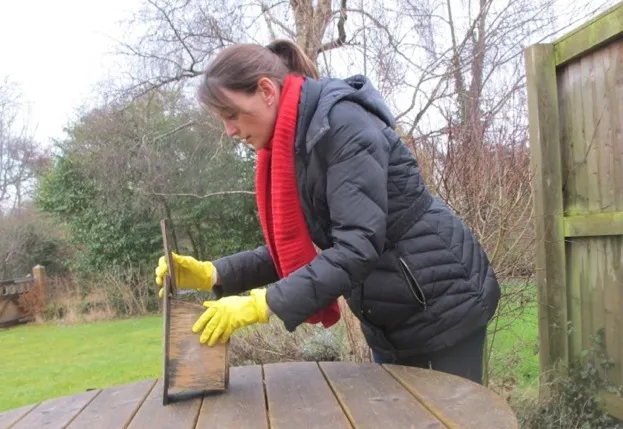
Fleas and parasites reside in the nests of most birds, and remain to infest chicks that hatch the following year. When the breeding season is over, old nests can be removed and the box cleaned out as long as the nesting residents have stopped using the box.
Bird-protection law permits the removal of unhatched eggs between 1 September and 31 January in England and Wales, and 1 August and 31 January in Scotland. If dead eggs are found in the nestbox they must be destroyed promptly during this period only and they cannot be kept or sold. It is quite normal for a few eggs to fail to hatch, or for some young to die. For example, blue and great tits lay up to 14 eggs to allow for such losses.
Wear surgical gloves and a dust mask when cleaning out nestboxes. Use boiling water to kill any remaining parasites, avoid using insecticides and flea powders and let the box dry out thoroughly before replacing the lid.
A handful of clean hay or wood shavings placed in the box once it is dry after cleaning may entice mammals such as woodmice to hibernate there, or birds may use it as a roost site.
When is National Nestbox Week?
National Nestbox Week takes place every year from 14 February, to coincide with the start of the breeding season for most garden birds.
This British Trust for Ornithology (BTO) initiative was launched in 1997 and over the years thousands of enthusiasts have taken part.
Main image: A pair of blue tits at a nestbox. Stef Bennett/Getty


